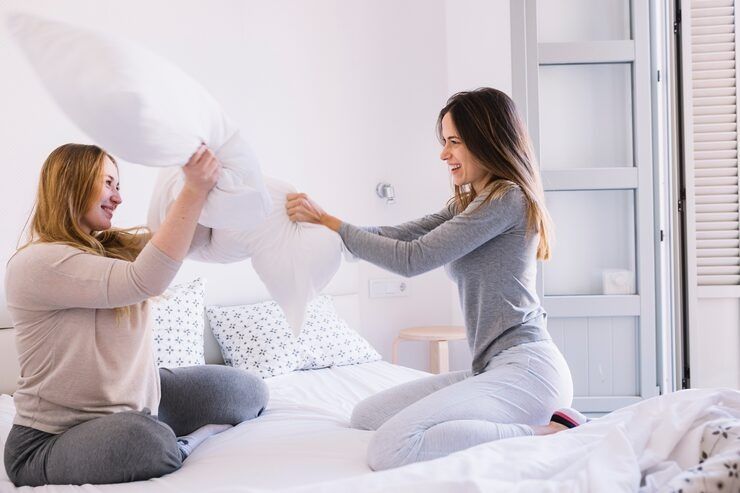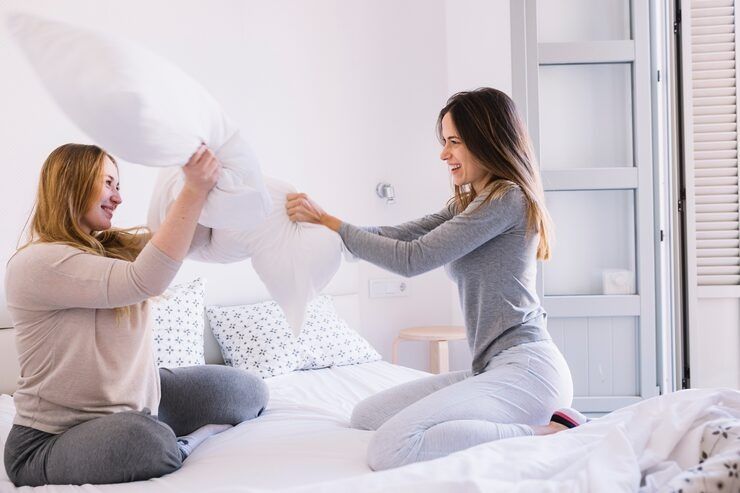Sleep comfort refers to the physical and psychological environment that supports restful, uninterrupted sleep. A key part of this environment includes your bedding and mattress—two elements often underestimated in their impact on overall well-being. Luxury bedding and mattresses go beyond aesthetic appeal; they contribute directly to sleep quality by addressing factors like support, temperature regulation, and skin sensitivity.
Historically, people associated “luxury” bedding with hotel stays or high-income households. However, the rising awareness of sleep’s importance in health has made premium sleep products more mainstream. This shift is driven by growing research on sleep hygiene and an increasing focus on wellness. Understanding the value of investing in quality bedding and mattresses can help anyone—from students to retirees—improve their daily life.

Why Sleep Comfort Is More Important Than Ever
Today’s fast-paced digital lifestyle often compromises the quality and duration of sleep. Sleep disorders, stress, and sedentary routines have all contributed to widespread sleep-related issues. According to a 2023 study by the World Sleep Society, over 45% of adults report poor sleep quality, with inadequate bedding being a contributing factor in many cases.
Sleep comfort is especially important for:
-
Professionals managing stress and long hours
-
Elderly individuals dealing with joint pain or insomnia
-
Parents who need deep, uninterrupted sleep
-
Students requiring better focus and memory retention
-
People with allergies needing hypoallergenic materials
An uncomfortable mattress can disrupt sleep cycles, increase back or neck pain, and even trigger respiratory issues due to dust mites or synthetic fabrics. Luxury bedding and mattresses solve these problems through thoughtful design, quality materials, and ergonomic support systems.
Trends and Updates: What Changed in 2024–2025?
In the past year, the sleep product industry has evolved rapidly with technological innovations and a focus on sustainability. Here are some notable trends and updates:
| Trend | Description |
|---|---|
| Sustainable Materials | Organic cotton, bamboo, and Tencel-based linens are in high demand for being breathable and eco-friendly. |
| Smart Mattresses | Brands like Eight Sleep and Tempur-Pedic now offer temperature-controlled and sleep-tracking mattresses. |
| Modular Bedding Systems | 2024 saw the rise of customizable pillows and layered bedding that allow users to adjust firmness and warmth. |
| Certifications | Certifications like OEKO-TEX, CertiPUR-US, and GOTS have gained consumer attention for confirming non-toxic and ethical manufacturing. |
Additionally, the global market for luxury sleep products grew by over 6% in 2024, according to the Global Wellness Institute, indicating increasing demand across age and income demographics.
Are There Any Legal or Policy Considerations?
In many countries, sleep products are regulated to ensure consumer safety and truthful marketing. The following are common areas affected by laws and policies:
-
Flammability Standards: In the U.S., mattresses must meet fire resistance standards set by the Consumer Product Safety Commission (CPSC).
-
Labeling Regulations: Bedding and mattress manufacturers are required to provide accurate material information, especially for allergy-sensitive consumers.
-
Environmental Laws: The European Union’s Ecodesign Directive requires mattress producers to meet sustainability standards.
-
Health Claims: Governments strictly regulate any claims about medical benefits. For instance, in India, the Advertising Standards Council of India (ASCI) restricts the use of misleading health claims in mattress advertising.
These policies help ensure that consumers receive products that are safe, sustainably made, and marketed with transparency.
Helpful Tools, Resources, and Services
If you're exploring luxury bedding and mattresses, the following tools and resources can guide your decision-making process:
-
Sleep Quality Trackers: Apps like SleepScore, Sleep Cycle, and Fitbit help you understand how your bedding affects your sleep patterns.
-
Mattress Comparison Websites: Tools like Sleepopolis, Mattress Clarity, and Wirecutter offer expert reviews and side-by-side comparisons.
-
Bedding Material Guides: Websites such as GoodOnYou and OEKO-TEX provide insights into fabric sourcing and sustainability ratings.
-
Allergen Checklists: The Asthma and Allergy Foundation of America (AAFA) offers guidelines on choosing bedding for sensitive skin or respiratory conditions.
-
Temperature Regulation Calculators: Available on brand websites like Eight Sleep, these help determine your ideal sleep temperature based on age and body type.
Using these resources can reduce guesswork and increase confidence in selecting sleep products tailored to your specific needs.
Frequently Asked Questions (FAQs)
What’s the difference between regular and luxury bedding?
Luxury bedding often uses higher-quality materials such as Egyptian cotton, silk, or bamboo. It also includes attention to stitching, softness, breathability, and hypoallergenic properties that standard bedding may lack.
How often should I replace my mattress and bedding?
Experts recommend replacing mattresses every 7–10 years and bedding every 1–2 years. Signs such as sagging, discomfort, or increased allergy symptoms may indicate it’s time for a change.
Are expensive mattresses always better for sleep?
Not necessarily. While cost can reflect quality, the best mattress is one that supports your specific sleep posture, body weight, and comfort preference. Look for trial periods and certifications instead of relying solely on price.
Is memory foam better than a spring mattress?
It depends on personal needs. Memory foam is known for pressure relief and body contouring, while spring mattresses offer better airflow and firmness. Hybrid models aim to combine both benefits.
Can luxury bedding help with insomnia or back pain?
It can contribute positively but is not a standalone solution. Ergonomic support and breathable materials can ease physical discomfort, which may improve sleep quality. However, persistent issues should be discussed with a healthcare provider.
Conclusion
Sleep comfort isn’t just about luxury—it’s about health, energy, and overall well-being. With advances in technology, sustainability, and ergonomic design, luxury bedding and mattresses are more accessible and effective than ever. Whether you’re a light sleeper, an allergy sufferer, or just looking to upgrade your lifestyle, choosing the right sleep environment can make a noticeable difference.
Take time to research, try products with sleep trials, and use tools that help you understand your sleep habits. Sleep is a daily reset for the body and mind—investing in your comfort is not indulgent, it’s essential.

